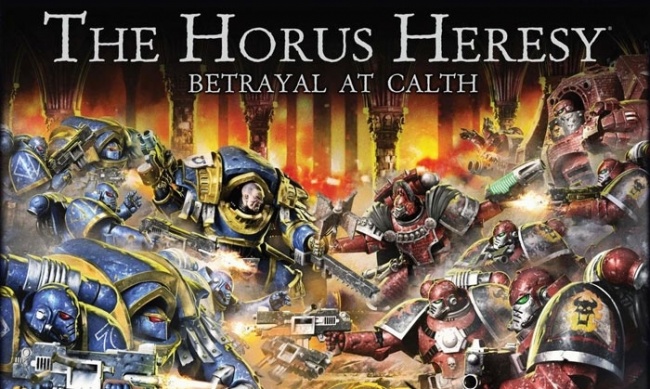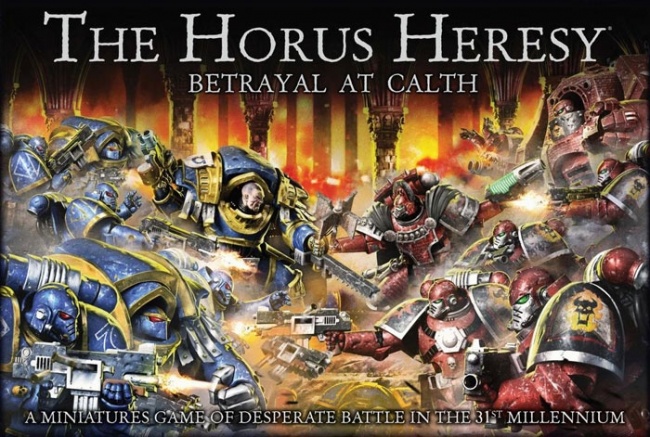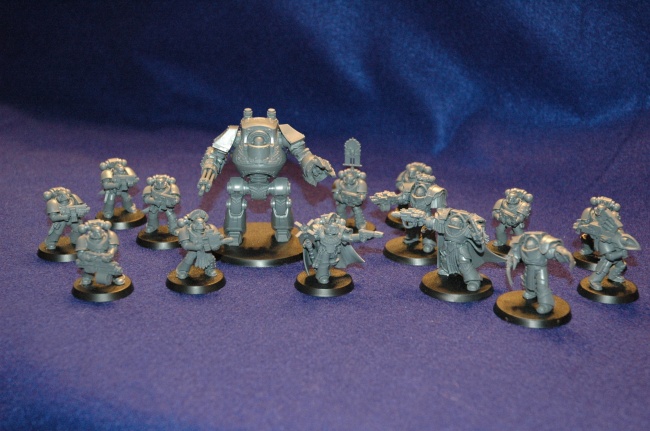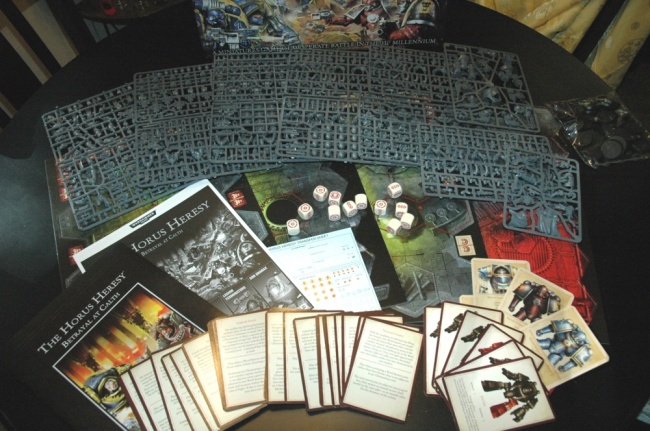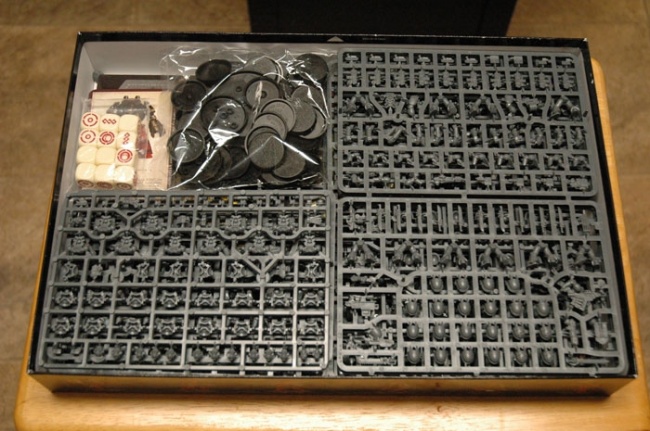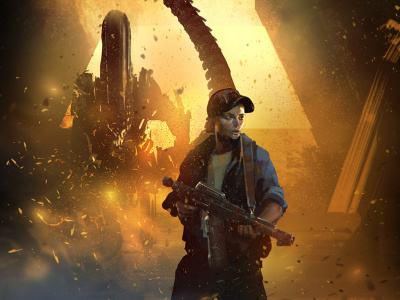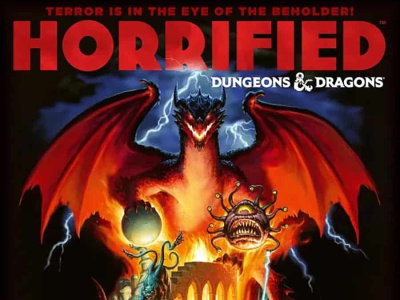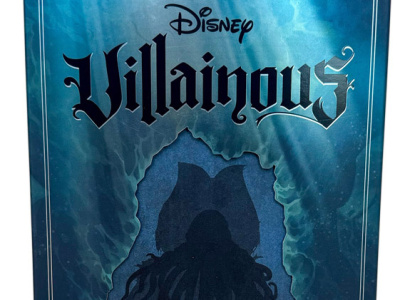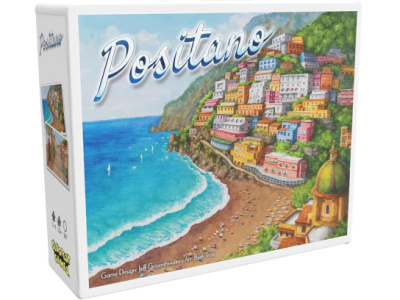Publisher: Games Workshop
Release Date (US): November, 2015
MSRP: $150.00
Players: 2
Ages: 12 and up
Playing Time: 30 to 90 minutes
Product #: MFG4130
ICv2 Rating: 4 Stars out of 5
Games Workshop is known for the quality of its models, and rightly so. They have built a global empire on the backs of tiny plastic soldiers, particularly the Space Marines of Warhammer 40,000. It makes sense that they should use their exquisite models as playing pieces in every game they produce: the games will look marvelous! But the question is, does The Horus Heresy: Betrayal at Calth offer any substance beneath the sculpted plastic surface? I believe it does.
Summary: As the galaxy-spanning Imperium of Man stands poised to achieve its final victory, it is ruptured by betrayal at the highest levels. The genetically-engineered Space Marines, meant to be the guardians and protectors of the human race, turn on each other in a bitter feud that is only possible between brothers taught from birth to compete against each other. The Horus Heresy: Betrayal at Calth depicts one of the earliest battles of this civil war, as two opposing groups of Space Marines fight desperate battles to the death in the twisted corridors beneath the surface of a destroyed world.
Each player leads a small team, represented in the game by excellent Games Workshop models. The action is played out on a set of double-sided geomorphic game boards, which allows for some variety of battlegrounds. Each round of play, every group of marines gets to take two actions, moving around the board and attacking their enemies, using special dice to resolve their conflicts in a quick, intuitive way. Special “command cards,” different for each player, offer unique tactical opportunities and “gotcha” moments, representing the unique equipment and special tactics used by each side. Six very different scenarios are included, none of which, thankfully, degrade into simple and rather boring “just kill the bad guys,” but instead demands that one side or the other (or both) complete very specific mission objectives.Originality: Games Workshop has spent decades constructing its epic Warhammer 40,000 universe and backstory, so in a way this counts as both “original” and not at the same time. As for the game itself, it is, ultimately, a straight-forward and rather typical scenario-driven tactical combat game on a variable board. But, the innovative way that the different unit types and weapon choices interact with each other present interesting tactical choices almost every turn, in a way that is not typical for games of this style.
Presentation: Like all Games Workshop products, the presentation is fabulous. The box artwork is striking and dramatic, full of action and color that draws the eye. The slender rulebook further enhances the feel of the setting with a small number of well-chosen paintings and photographs of expertly painted models. The board pieces are beautiful (if a tad dark), and compliment the 38 highly-detailed plastic miniatures.(Click any image for larger view.)
A word of warning, though, to those unfamiliar with Games Workshop: opening the box may be very intimidating to some. There is no neat little baggie of playing pieces. Instead, one finds sprue after sprue of unassembled plastic models. Workshop minis are relatively easy to assemble, and none of the models in this box set are going to cause any trouble for anyone that has any modeling experience whatsoever, but there will be quite a few hours of assembly before gameplay can begin.Quality: As mentioned before, the models are simply fabulous. There is a huge variety of heads, arms, legs, and torsos, so you can easily make every model into its own individual character. The boards and tokens are of excellent quality, constructed from thick cardboard with a nice glossy coat. The rulebook is attractive, well-written, and offers plenty of illustrated examples, which is particularly helpful when dealing with more complex concepts like line-of-sight. The dice and cards are also excellent. I have had trouble with other Games Workshop boxed sets in the past, because of non-plastic components being damaged by the plastic models scratching them inside the box during transit. But in Betrayal at Calth, these more delicate pieces were protected by a layer of shrink wrap. Kudos for that. The box itself was also higher quality than I’m used to from Games Workshop, which is certainly appreciated.
There are, however, a couple of things that frustrated me as a board game player: One of the cool elements of the game is the ability of players to customize their forces before every battle, choosing which heavy weapons to arm their men with and how to equip their sergeants. But, the models need to be assembled with glue, making them impossible to change after they have been put together (though experienced modelers can get around this using magnets or pins or some other clever devise, that will be beyond the skills of most novices). As a result, you either have to buy extra models, or use models that don’t actually carry the weapons they supposedly have. The other problem is that once you assemble the mighty (and mighty big) dreadnought model, it will no longer fit in the box. If they had only made the box a quarter of an inch deeper, this wouldn’t have been an issue. Neither of these issues really affects the enjoyment of the game, but they are annoying.
Marketability: A lot of people are going to look at Betrayal of Calth and see a very high ticket price. $150 is a lot to spend for a board game, and that is an obstacle. For fans of Games Workshop who understand the costs of plastic models, that price suddenly becomes extremely reasonable: buying an equal number of comparable models from the Warhammer 40,000 line would cost almost $200. And, these models are fully compatible with Warhammer 40,000 (and Forge World’s Warhammer 30,000 variant). As an accessory for tabletop wargamers, price won’t be an issue. But people who only want a good boardgame might be scared off by the high price point and the amount of assembly required.
Overall: I really enjoyed playing Betrayal at Calth. I love the rich history of the Warhammer 40,000 setting, but more than that I really liked the tactical decision making required during the game. The rules seem deceptively simple at first, but upon playing the game you discover there are a lot of subtle features lurking just beneath the surface. Almost every turn offered significant and meaningful choices, and nothing ever felt automatic. I particularly like the interplay of the various weapon choices and the special effects each weapon has on the enemy. Even the “weakest” weapons can be used to excellent effect by a clever and careful strategist. The six scenarios present unique and interesting challenges for both sides, and Games Workshop has already started publishing additional scenarios in their White Dwarf publication, offering the potential of unlimited replayability.
Of course, it helps that I am a modeling hobbyist myself. For me, assembling the models (and eventually painting them) is as much a joy as playing the game is going to be. Those who don’t share my enthusiasm for that hobby might find Betrayal at Calth a little harder to get into. But I hope they do, because there really is substance under all the glitzy fluff. I’m happy to give this game 4 out of 5.



